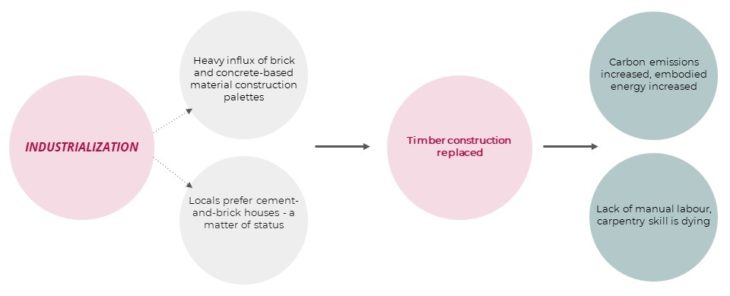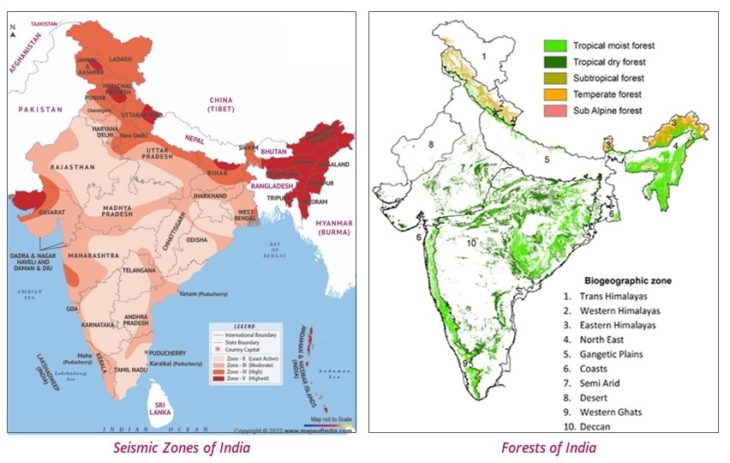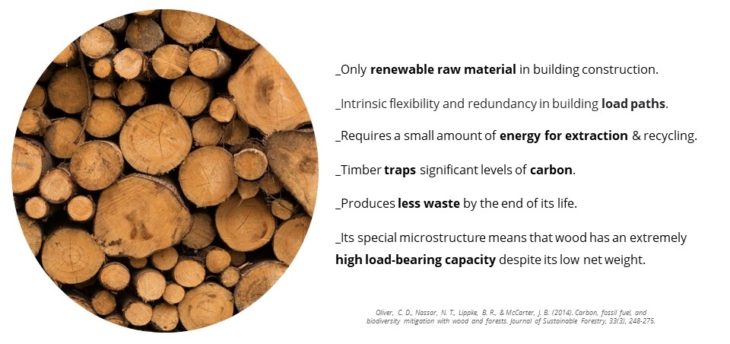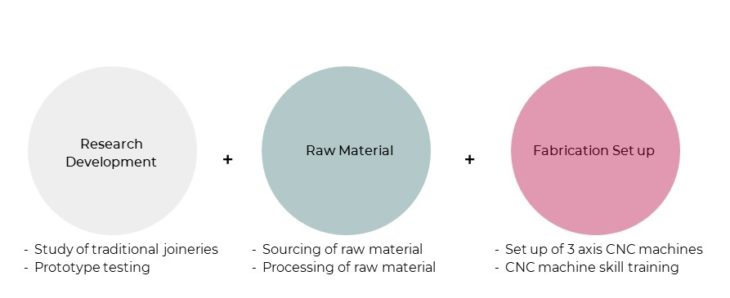Abstract
Timber Joineries are method of geometrically interlocking timber elements prevalent in historic cultures around the world. In the preindustrial times, the inherent heterogeneity and natural variance of wood was accepted and effectively utilized. The intricate structural differences in the raw material were employed for specific building elements through manual wood-working techniques. This was further used as an advantage while designing structures to withstand seismic forces in the regions where earthquakes are common.
With the dawn of industrialization, the predominance of wood architecture became increasingly challenged by synthetic materials. As technological advances introduced new building materials and production processes, the traditional understanding of wood as a natural material became questioned by both the availability of more homogenous materials with precisely designed properties and more normative design and engineering approaches.
ReJoin aims to develop a sustainable system of modern timber joineries on the basis of traditional timber joineries for highly seismic zones of India. From the perspective of digital fabrication, this system takes advantage of the precise aid of CNC milling. This system which is designed for disassembly, also aims to reduce embodied energy of the structure, keeping in mind the design for withstanding seismic forces.
Opportunity//Problem

The high seismic zones of India also happen to be in close proximity of the densely vegetated parts of India, where the supply for timber is easily available. This reduces transportation costs of the raw materials.

Opportunity//Material

Opportunity//Target Customers

Market

Implementation

Team & Funding

ReJoin is a project of IAAC, Institute for Advanced Architecture of Catalonia developed in the Master in Advanced Architecture 2021/22 in the Business Innovation Seminar by Student: Hairati Tupe and Faculty: Davide Rovera
